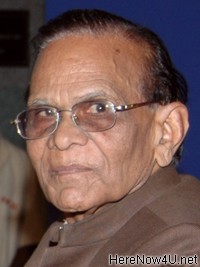It is unfortunate that recent interpretation of principle of Jainism by some, particularly the Songarh School of thought do not accept this fundamental principle of symbiosis enshrined in authentic texts. They go to so funny and illogical extent saying such things that potter does not make pots and soil takes shape only because of its own intrinsic property. They assert that no substance can influence other. They do not accept even killings as violence and
जो मण्णदि हिंसामि य हिंसिज्जामि य परेहि सत्तेहिं। सो मूढ़ो अण्णाणी णाणी एत्तो दु विवरीदो॥247॥
[The person who subscribes to the belief that he can kill others and that others can kill him is wrong......... ] - Samayasar
Such quotes will be misleading and give a wrong message to people in general and at large. Apparently this is against the very principle of Non-Violence, which is one of the five vows mandatory for householders as well as saints.
However, they do not take poison as they know its effect and they do take medicines for cure of diseases, thus contradicting their own interpretations. The enlightened ones the Tirthankaras were great thinkers and analytical. Whatever they have stated is perfectly logical and rational. The principle of Anekant (non-absolutism) is unique and synthesises logically different views. According to Jainism the actions and interactions are because of inherent properties or qualities defined as Upadan, which manifests with the help of Nimitta i.e. ambient environmental factors. Pots cannot be made of pure sand and soil with required property is necessary. This property is Upadan but help of the potter is necessary which is Nimitta. Things move because of their capability but do so by the assistance of Dharma Dravya.
Another misconception about Jainism is that it is individualistic or introvert. No doubt Jainism lays stress on purification and upliftment of self or individual because unless the individual himself follows principles of Jainism, he is not competent to help others. This is not introversion but a prerequisite to attain competence. One who cannot help himself cannot help others. The enlightened ones, Arhats, attain the highest degree of purification and do not need any more effort for further individual gains. But they preach to help mundane souls. Had they been introvert, they would not be preaching at all. The Arhat idols are always in posture of eyes half closed and half open, indicative of unique synthesis of self and universe. Arhats do not shut their eyes from the world but keep eyes half open for consideration of wellbeing of other souls also. The basic tenets, principles and prescribed code of conduct in Jainism centres round the fundamental principle of symbiosis and neither introversion nor extroversion.
 S.M. Jain
S.M. Jain
